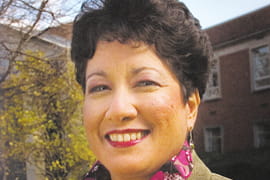Five Key Facts About Women's Health
March 26, 2012
Related

Women and men tend to lead gendered lives in our world. We have to pay attention to that in health care, especially in terms of heart disease. For example: cardiac problems are more common in men, but more women die from them. Why is that? Part of it comes from the fact that women live a little bit longer. But the risk factors—like smoking and stress—appear more in women than their male counterparts. The prevalence of body-image issues among women also has an influence on these risk factors. If we can understand these socialized differences, we can understand why certain risks are more prevalent. 3. Symptoms for certain health problems aren’t always recognized in women. Women’s symptoms for certain health problems differ from those of men, and that often goes unnoticed. For example, in men, the signs for a heart attack are often tightening in the chest and pain that spreads down the left arm, which is pretty well known. In women, symptoms of a heart attack can include gastrointestinal upsets, feeling overwhelming fatigue or a fast heart beat. I’ve done an EKG on patients and I’ve told them it looks like they’ve had a heart attack, and they had no idea. Then she usually remembers a time when she had a fast heart beat or was unusually tired, and because she didn’t know the signs, she didn’t recognize it. We can train health professionals, but we also need to train the public to know that women experience some health problems differently. 4. Women have special needs when it comes to health care. Women’s health is not just half the population’s issue. From a science perspective, one size doesn’t fit all, and there’s variability in terms of care between sexes and genders. We know now in health care that a person’s endpoint with something such as diabetes or hypertension isn’t the diagnosis. It’s about who helps them and if they have access to medicine. There’s also the poverty factor—and there is often a financial difference between men and women. If women don’t have the resources, how will they get care? If women aren’t getting proper care, society pays in terms of productivity. 5. Understanding women’s health can help advance the field of medicine. When we look at sex and gender differences, we get stronger. We can understand science better. We can be better at working toward delivering excellent clinical care. There are researchers who have found that if we treat breast cancer a certain way, maybe that has implications on how we treat prostate cancer, because both are types of glands. If we know that women tend to have more responsiveness to certain things that increase their heart rates as compared to men, I’m going to be careful with both genders because I know these things may have an effect. For all of us who profess we want to lead healthy lives, attending to each side makes everyone better and stronger. Dr. Ana E. Nuñez is the director of the Center of Excellence, director of the Women’s Health Education Program and a professor at Drexel’s College of Medicine. She is a nationally recognized medical educator in women’s health, curricular reform and cultural competency, and has served as the principal investigator in a number of educational and health services research grants in women’s health and culturally effective health care.
Drexel News is produced by
University Marketing and Communications.